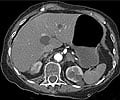A person would stop drug use and then begin smoking as a replacement in the context of drug treatment where they are surrounded by smokers.

Lead study author Joseph R. Guydish, a professor of Medicine and Health Policy at the University of California, San Francisco (UCSF), told that tobacco use isn’t just an issue for addiction recovery programs; it’s also a problem for both county and state public health offices supporting rehabilitation facilities.
“At the federal level this means the Substance Abuse and Mental Health Services Administration, the Center for Substance Abuse Treatment, the National Institute on Drug Abuse, and the National Cancer Institute. Internationally this means the WHO, its Framework Convention on Tobacco Control and its MPOWER principles. These are the agencies that can exert leadership in the area of smoking and addiction treatment, and provide programs with resources needed to better address smoking,” said Guydish.
Researchers reviewed 54 studies, which were published from 1987 to 2013, involving a total of 37,364 participants in 20 countries on six continents.
“Anyone interested in tobacco control, whether nationally or internationally, should take note. We cannot reduce adult smoking much further (at least in the United States) without addressing smoking in sub-populations where smoking rates are high,” he said.
“Nicotine operates in the same reward pathways of the brain as other addictive drugs, however its effect is relatively weaker than the effect of those other drugs. We know that nicotine potentiates the effects of other drugs, but it seems unlikely that a person would stop drug use (for example) and then begin smoking as a replacement. But it is possible,” he said.
“Tobacco control researchers have done a great job of implementing tobacco control policies and evaluating their effects in the general population, in healthcare settings and on college campuses,” said Guydish.
Source-Medindia
 MEDINDIA
MEDINDIA




 Email
Email










